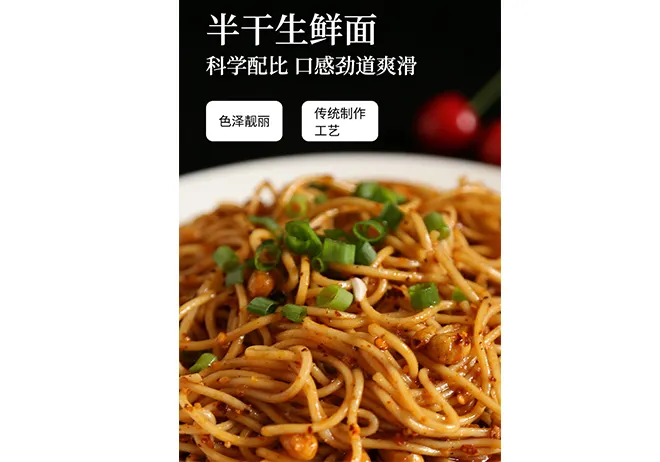what type of noodles can diabetics eat
What Type of Noodles Can Diabetics Eat?
Managing diabetes involves careful attention to diet, particularly when it comes to carbohydrate intake. Noodles, a staple in many cuisines worldwide, can be a source of carbohydrates that need to be consumed mindfully. Fortunately, there are various types of noodles available, and some can fit into a diabetic meal plan. In this article, we will explore the best noodle options for individuals with diabetes, focusing on their nutritional profiles and how they can be incorporated into a balanced diet.
Understanding Carbohydrates
Understanding the carbohydrate content in food is crucial for diabetes management. Carbohydrates are broken down into glucose, which can spike blood sugar levels if consumed in excess. The Glycemic Index (GI) is a helpful tool that ranks foods based on their impact on blood sugar levels. Foods with a high GI can cause rapid spikes in blood sugar, while those with a low GI lead to gradual increases. For diabetics, selecting low-GI foods is essential.
Whole Grain Noodles
Whole grain noodles, such as whole wheat pasta, are a great option for diabetics. These noodles are made from whole grains, which retain their natural fiber and nutrients. The higher fiber content slows down the digestion and absorption of carbohydrates, leading to a more gradual increase in blood sugar levels. Whole grain noodles also provide essential vitamins and minerals that support overall health.
Legume-Based Noodles
Legume-based noodles, like those made from lentils, chickpeas, or black beans, are another excellent option for diabetics. These noodles are typically low in carbohydrates and high in protein and fiber. The fiber helps to control blood sugar levels, while the protein provides a feeling of fullness. For instance, chickpea pasta can contain approximately 25 grams of protein and 15 grams of fiber per serving, making it a nutritious choice.
Vegetable Noodles
Spiralized vegetable noodles, such as zucchini or squash noodles, are increasingly popular and can be an excellent substitute for traditional pasta. These noodles are low in calories and carbohydrates, making them suitable for a diabetic diet. They provide essential nutrients and hydration, and when combined with a protein source and healthy fats, they can create a balanced meal. For example, pairing zucchini noodles with grilled chicken and a drizzle of olive oil can result in a satisfying dish without the high carbohydrate load of regular pasta.
what type of noodles can diabetics eat

Shirataki Noodles
Shirataki noodles, also known as konjac noodles, are a low-calorie and low-carb option that is gaining popularity among those managing diabetes. Made from the konjac yam, these noodles contain a type of soluble fiber called glucomannan, which can help regulate blood sugar levels and promote satiety. They are practically calorie-free and can be incorporated into various dishes as a substitute for traditional noodles. However, it’s important to rinse them thoroughly and follow cooking instructions to improve their texture.
Rice Noodles
Rice noodles can be enjoyed by diabetics, but moderation is key. Opting for vermicelli rice noodles, which are thinner and generally have a lower GI than thicker varieties, can be a better choice. Pairing rice noodles with a source of protein and plenty of vegetables can help balance the meal and prevent spikes in blood sugar.
Tips for Healthy Noodle Preparation
When cooking noodles as a part of a diabetic-friendly meal, consider these tips
1. Portion Control Be mindful of portion sizes; a smaller serving can help manage carbohydrate intake. 2. Pair with Protein and Vegetables Adding lean proteins (such as chicken, tofu, or fish) and plenty of vegetables to your noodle dishes can create a balanced meal. 3. Avoid Heavy Sauces Opt for lighter sauces made with olive oil, herbs, or tomato-based sauces instead of creamy, high-sugar sauces. 4. Monitor Blood Sugar After consuming noodles, monitor your blood sugar levels to see how your body responds and adjust portions accordingly.
Conclusion
Incorporating the right type of noodles into a diabetic diet can be both enjoyable and healthy. Whole grain, legume-based, vegetable, and shirataki noodles offer great alternatives to traditional pasta, providing satisfaction without compromising blood sugar control. By understanding carbohydrate content and making smart choices in preparation and portioning, individuals with diabetes can still enjoy their favorite noodle dishes while maintaining their health.
-
Unleash Your Inner Chef with Delectable Italian Pasta CreationsNewsAug.01,2025
-
Savor Health and Flavor: Irresistible Soba Noodles for Sale Await!NewsAug.01,2025
-
Nourish Your Body with Premium Organic Ramen - A Culinary Delight AwaitsNewsAug.01,2025
-
Elevate Your Dishes with Our Exquisite Kinds of Egg NoodlesNewsAug.01,2025
-
Dive into Flavorful Convenience with Our Ramen OfferingsNewsAug.01,2025
-
Discover Exquisite Types of Naengmyeon and Chilled Soba NoodlesNewsAug.01,2025
-
Is Whole Wheat Pasta Healthy?NewsMay.30,2025
Browse qua the following product new the we

















































































































